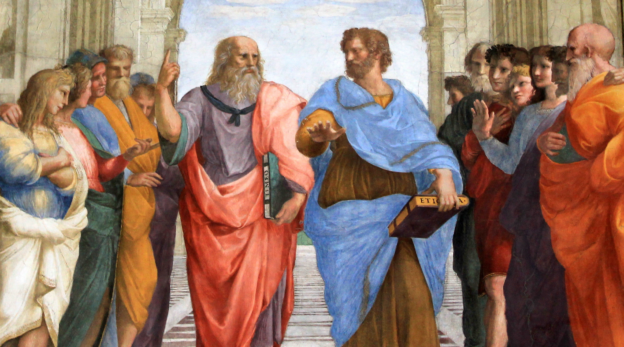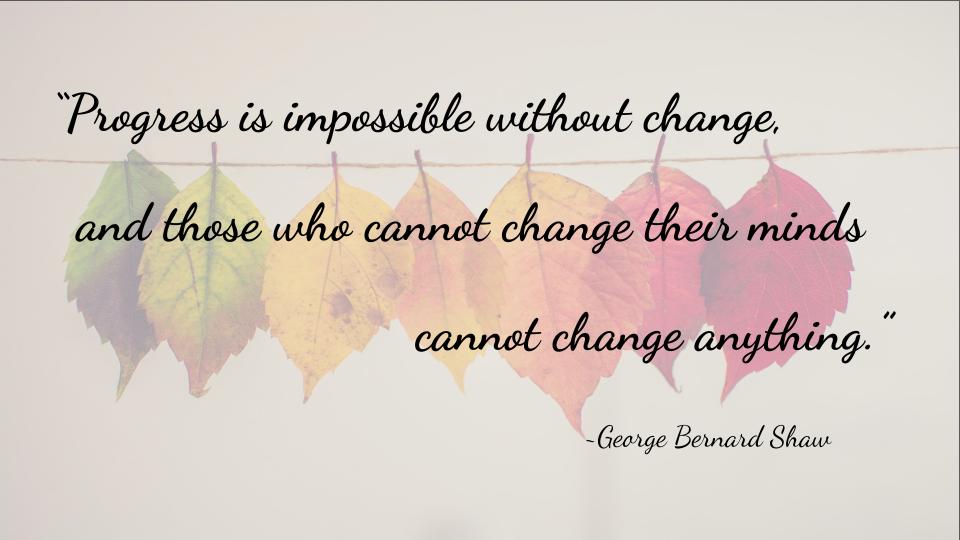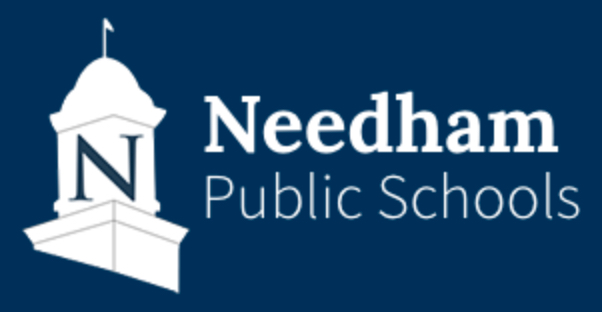This is Part 3 of Jim Flanagan’s summer project exploring instructional design.
As a child, I watched too much TV, so “sit right back and you’ll hear a tale.” US public schooling, like Gilligan’s Island, seems trapped in the limitations of its design despite readily available means of improving. This quote is attributed to Winston Churchill: “Americans will always do the right thing, only after they have tried everything else.” Whether he said it or not, let’s hope that we are ready to do the right things to improve education. But the early signs of the post-pandemic response are not promising as we continue to feed more resources into the same, old coal furnace hoping for greater output. To understand the present, it is necessary to explore the past. So this blog is inspired by David Byrne’s prompt – “You may ask yourself, “Well, how did we get here?” ”
Seat time, courses, summative tests, and schedules drive the current traditional design of K-20 schooling. We move the students based on time instead of allowing the instructional content to move to meet each student. In grades 6-20, there is a curriculum of courses in approximately 15-week semesters. Teachers develop lesson plans, deliver lectures based on curriculum, and grade students based on coursework and summative tests. Students access static textbooks, other reading, and increasingly digital materials based on a standardized scope and sequence. The institution, not the student, determines the pace of learning. The school building and classrooms are the predominant place of learning. I refer to this as the factory model because the students essentially move on schedule-based conveyor belts through instruction with little regard for their readiness. The traditional model contrasts with a personalized, competency-based model – based on the science of learning – in which students can learn at any path, any pace, any time, any place. In this blog, I outline some significant influences that formed our traditional system and drive our unyielding, nostalgic acceptance of it.
Education is as old as humankind. On the savannah, our ancestors had to teach their young to survive. With the advent of societies and religious beliefs, norms, and doctrine were added to expected knowledge. Teaching was primarily spoken along with some gestures and imagery – PowerPoint in the dirt or on a cave wall. Stories emerged as a primary way to retain and share wisdom. Then came the technologies of symbols (~100,000 years ago), alphabets, and writing (~ 1900 BC) to store and transmit knowledge.
Let’s pause our sprint to recognize Socrates – of the method and dramatic exit fame. His contributions to teaching and learning are well-trodden. Did you know that he also opposed learning from reading? He believed that reading – instead of memorizing the spoken word – could lead to forgetfulness, intellectual laziness, and misinterpretation. So an aversion to change is as old as learning itself.
Back to the drive-thru history lesson. The concept of schooling emerged around the time of Socrates, Plato, and Aristotle (470 BCish.) They believed that learning should be compulsory, designed to help people develop their minds and souls, and based on inquiry, dialogue, and civic education principles. Socrates preferred to teach on the move, interacting with society. Plato created “the Academy,” so school as a place emerges. Aristotle added ideas about practical knowledge and personalized learning that is lifelong.
In the last three paragraphs, I summarized 300,000 years of homo sapien education for my fellow short attention spanners. As of 1 AD, we have a concept of school with a place, time, expectations, methods, and curriculum. Before moving on, I recognize this blog has a Western bias. That is because Western influences overwhelmingly inform the US system of schooling. I do not mean to convey that these models are all-encompassing or better than those from other cultures. And most of the people I reference are white males. Unfortunately, most readily accessible history is biased. I recognize that they are not solely responsible for how our systems have succeeded or are increasingly failing. Our understanding of education history can use a healthy exploration of hidden figures.
Skipping forward to 1452, Johannes Gutenberg used the first mass-produced movable metal type to print Bibles – a game-changing learning technology. For the next 350 years, formal education was elite, private, heavily influenced by the Protestant religion, and primarily reserved for white males.
The founding of the US had a significant influence on education. Founded in 1635, Boston Latin School is the first public school and oldest existing school in the United States. There was an emerging belief in universal education to provide all citizens with the knowledge and skills they needed to participate in civic life and support this new democracy thing. English grammar schools served as a template. English educational methods were used to teach reading, writing, and arithmetic; reinforce family, church, community, and apprenticeship; and assess progress based on standardized tests. And even the English “six hours” school day influenced our six-period structure. Noah Webster introduced the Blue-Backed Speller in 1793 – a school staple for years with spelling and reading exercises, moral lessons, religious content, and a pro-American perspective. Thomas Jefferson promoted “universal” access to education – with some glaring exceptions to the universal concept. But formal education still remained mostly elite, private, male, and white until Horace Mann entered the picture.
Why are over 50 public schools in the US named after Horace Mann? Well, he was kind of a big deal. In 1837, he was appointed Secretary of the Massachusetts Board of Education and took that job seriously. He visited over 100 schools by horseback and chronicled issues in detail. He founded and edited The Common School Journal promoting publicly funded and controlled, non-sectarian education to serve children with various backgrounds provided by well-trained, professional teachers. In 1843, a visit to Prussia led him to conclude that their system was:
– “assiduously cultivated it in all its branches. The result has been that the Prussian people are the best informed in Europe.”
– “highly centralized, with the government exercising a great deal of control over the schools.”
– “very successful. The Prussian people are well-educated, and the country has a high level of literacy. The Prussian system of public instruction is also a model for other countries.”
The Prussian system also emphasized obedience, duty to country, and general ethics. Mann’s national influence led to the Common School Movement – also championed by the first US Commissioner of Education, Henry Barnard. And the McGuffey Reader emerged to supplant the Blue-backed Speller. Mann (and others) had an incredibly positive impact on most Americans’ lives. And yet the system was still segregated, biased, inequitable, and designed for a time with limited understanding of human cognition and no digital technology.
Education reform is a small world, as evidenced by Catharine Beecher, who advocated for women’s education along with Emma Willard and Mary Lyon in the early to mid-19th century. Catharine was the sister of author-abolitionist Harriet Beecher Stowe, whose husband was Prussian education advocate Calvin Stowe. In the early 19th century, men made up the majority of teachers in the US. Catharine believed that women were naturally more nurturing and patient than men and that they were better equipped to handle the challenges of teaching young children. So she championed Normal Schools to professionalize the teaching profession and train female teachers – particularly in the expanding West. By the late 19th century, women made up the majority of teachers in the US and have remained the majority ever since.
Immigration and religion were two other significant education influencers in the latter half of the 19th century – especially battles related to Protestant versus Catholic doctrines. And the civil war should have eliminated all racial barriers to education, but we know it did not. We cannot ignore the racial and nationalistic exceptionalism that led to horrific phrases like “Kill the Indian, save the man,” first used by Richard Henry Pratt, the founder of the Carlisle Indian Industrial School. (I recommend the book Path Lit by Lightening: The Life of Jim Thorpe, who attended Carlisle.) This thread runs through the history of US education and continues to impede our progress toward high-quality education for all based on inquiry, evidence, and critical thinking instead of doctrine and cultural bias.
Participation in public education was increasing but still not meeting the demands of the growing US industrial economy. So the National Education Association (NEA) created the Committee of Ten to study the state of secondary education. The members were all white males, and the majority were university presidents. In 1893, the Committee recommended that all high schools:
– offer a common core curriculum that included English, mathematics, science, history, and foreign languages.
– focus on college preparation, and offer courses that would prepare students for college-level work.
– use standardized tests to assess student achievement and to compare the performance of schools.
The Committee also recommended that teachers be better trained with opportunities to learn about new teaching methods, including the use of textbooks, lectures, recitations, labs, and libraries.
Around that time, Gary, Indiana school superintendent William A. Wirt developed a “platoon” system in which schools were open eight hours a day, alternating groups of students between classrooms and recreational or vocational activities so that every facility was in constant use.
In the late 19th century, John Dewey – philosopher, psychologist, educational reformer, and founder of the Chicago Lab School – authored The School and Society. He called his philosophy “progressive education” and argued for education based on the child’s experience, learning by doing, exploration, and experimentation. He also promoted social learning and cooperative work. Maria Montessori and later Loris Malaguzzi (from Reggio Emilia, Italy) had similar ideas – and differences.
In 1906, the Carnegie Foundation developed the Carnegie unit to measure how much time students must spend in class to complete a course. It was based on seat time and determined that 14 units would translate into four years of high school education. (Note that the Foundation recently announced a project promoting competency-based assessment.)
At this juncture, the powers that be convened and committed to redesigning teaching and learning based on a balanced, research-based evaluation of progressive and traditional models with a global perspective and appreciation for all cultures. Fake news alert! Of course that never happened. Instead, people like Dewey became both the most quoted and most ignored in favor of the status quo. More on that later.
The first half of the 20th century saw steady increases in school participation driven by expanded compulsory attendance. And increased use of testing – including IQ tests – and academic tracking to sort kids into college-prep or vocational courses. The explicit and implicit bias against groups other than white males went largely unabated.
Alfred P. Sloan Jr., President of GM and founder of the Sloan Foundation in 1934, significantly influenced public education. Scientific Management Theory, which emphasizes efficiency and productivity, was used to develop standardized tests, curriculum frameworks, and the departmentalization of schools. The Sloan Foundation also supported the Advanced Placement Program and the National Assessment of Educational Progress (NAEP.)
In the latter half of the 20th century, we finally started to chip away at the inequity with court decisions or legislation, including but not limited to Brown vs. Board of Education (1954); Civil Rights Act of 1964; Bilingual Education Act of 1968; Title IX (1972); and Lau v. Nichols (1974.) But our education system is a reflection of our society so equity is a work in progress and the ideal of a high-quality, personalized, education – freely available to every child – remains an aspiration.
While I have generally described US education nationally, public education is controlled primarily at the state and local levels. Everyone tells me that their state is the most local control. It is close enough, so I just agree with them all. Unfortunately, governance, funding, and accountability differ by state and zip code, but local control has yet to drive instructional design innovation at scale.
The last 50 years feel like No Acronym/Catch Phrase Left Behind. It started with the Elementary and Secondary Education Act (ESEA) of 1965 and the eight subsequent reauthorizations with hollow names like No Child Left Behind and Every Student Succeeds Act. And targeted programs and policies like IDEA and Title I. And funding booms like Race to the Top and ESSER. And requirements like IEPs and MTSS. They were all important with positive intentions. Unfortunately, they all reinforce rigid instructional designs meant for a different time and purpose other than human fulfillment. And few political or educational leaders are calling that out. This inertia is on a collision course with advances in our understanding of cognition and the Science of Learning in areas such as plasticity, differentiation, context, feedback, encoding, retrieval, etc. Grab some popcorn because The Science of Reading is just a short before the full-length feature reckoning of the largely ignored Science of Learning.
Admittedly, I missed a lot – especially technology and the pandemic. Unfortunately, technology has yet to effectively personalize learning without breaking the human connections critical to learning and human development. To date, edtech has just tweaked or reinforced the status quo. Consider data analytics and dashboards. How much time is wasted analyzing inputs like attendance and performance gaps created by the traditional system instead of redesigning it? And artificial intelligence won’t have an impact without the required instructional redesign that recognizes the importance of maintaining the instructional core of student, teacher, and content relationships. And the pandemic exposed how dated and rigid our system is more than it caused the problem. The cracks were all there.
For another perspective on the history of US education, check out this brief video from 2012 by Khan Academy’s Salman Khan and Forbes’ Michael Noer. https://www.youtube.com/watch?v=LqTwDDTjb6g
In my next blog, I will address the barriers to improvement and why the obvious is so darn hard to realize.





